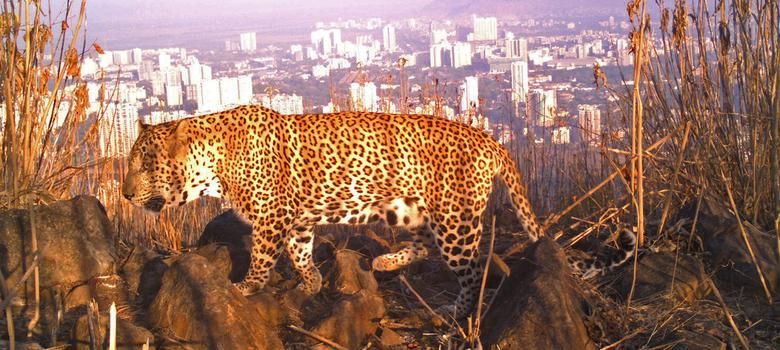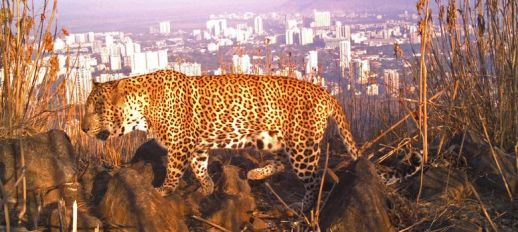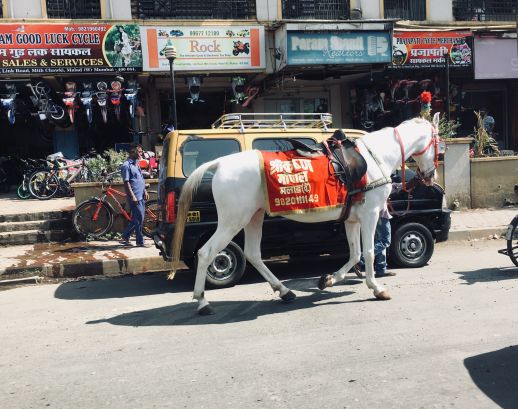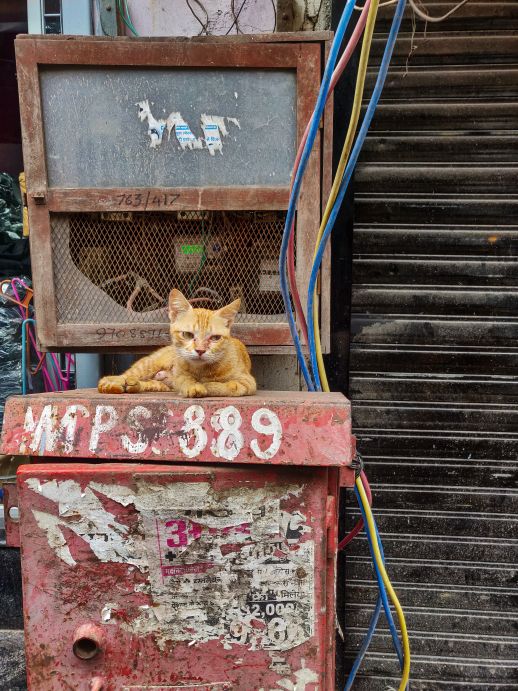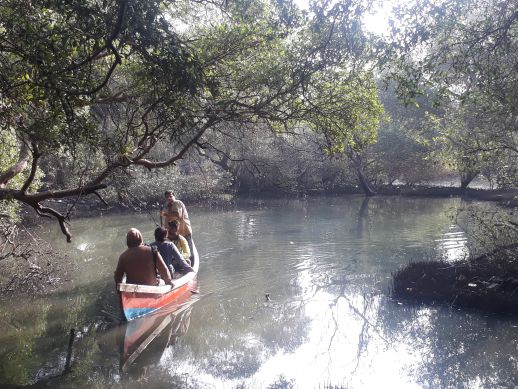Amidst news of wildlife taking over various cities around the globe during this unprecedented lockdown, we find ourselves reacting enthusiastically by the ‘takeover’ of non-human species.We are collectively intrigued by this possibility. Movies like Jumanji come to mind that create a terrifyingly playful juxtaposition of wildlife in the city. Yet, we must be aware of using the word ‘takeover’. While it implies a deep desire on behalf of animal lovers, it also belies the notion that cities are the sole realm of humans. This however, is not the case.
Animals have inhabited urban areas since the birth of human settlements. Indian cities are habitats for a vast number and variety of animals that are part of Indian urban life. It has taken an extreme scenario like the pandemic, to spotlight these creatures living in and around our cities. Cities display varying degrees of human-animal interactions. Some animals are domesticated for different purposes – food, companionship or both. India has large populations of stray animals, like dogs, cats and cows who, unlike their domesticated counterparts, do not directly depend on humans. Some animals thrive on the waste from human settlements. In Mumbai, the ubiquitous crows and rats offer free food recycling services to the city. Then there are the wild animals, including predator species. Mumbai is home to 21 Leopards that live in and around the Sanjay Gandhi National Park, not to mention the Mugger crocodiles of Powai lake and the large populations of birds, bats, reptiles and insects that call the city home.
However, to consider some of these animals as purely wild or misfits in the urban realm, is a facile reading of a reality that is far more complex. Boundaries between animal and human habitats are not impermeable or fixed. Species are directly or indirectly interacting with each other. There are no pristine habitats, just habitats with varying degrees of human intervention. Urban areas are created by the urbanization of Nature and urbanising contexts provide settings for novel, unprecedented interactions with animals. In species rich countries like India, this entails the urbanization of animals that now find themselves either surrounded by or pushed to the fringes of the city.
While stray or wild animals living in urban areas are not the direct responsibility of humans, they are always negotiating the urban environment to minimise risks, obtain food and seek shelter. In the past few weeks, many stories have emerged of wild animals roaming freely on city streets usually dominated by humans and motorised transport. Some of these animals, like the deer of Nara park in Japan and the monkeys in Thailand are now compelled to move about the city in search of food. Normally, food is accessible to them as a result of human activities. In Mumbai, animal lovers are venturing out despite the lockdown to feed animals who are struggling to find food on streets devoid of humans. In other instances, animals usually associated with the wilderness are being spotted in city centres. After nearly three decades an endangered spotted malabar Civet was seen on the streets of Calicut. In more thrilling news, a Puma has been ‘exploring’ the streets of Santiago, Chile. Even though these animals evoke the wilderness, in reality, they dwell in urban and peri-urban areas. Their territories and behaviour unavoidably linked to the project of urbanisation. It is evident that we live in a post-wild world.
But here is where human-animal interactions get inextricably linked to the genesis of the pandemic. COVID-19 is a zoonotic virus. The spectrum of coronaviruses, are zoonotic diseases- born of human-animal interactions. Bats are understood to be the hosts of COVID-19. This could have been transmitted from bats to other intermediate animal hosts. These hosts could be any of the species that were sold at the Huanan wholesale seafood market - the market in Wuhan China, from where the virus has spread all over the world.
Bats do carry coronaviruses, but humans are exposed only if they eat or handle them. The bats are more likely to transmit the virus if their own immune systems are compromised. Degradation of wild-life habitat compromises the health of ecosystems, making animals, including bats, more likely to fall sick. There is a correlation between quality of habitat and health, and further between quality of habitat and type of human intervention. Negative human-nature interactions are responsible for the decline of global ecosystemic health.
Now more than ever, we are forced to acknowledge these interactions and try to mediate them. While there are evident dangers in the consumption of wildlife, it is probably more dangerous, if post COVID -19, we choose to systematically exclude animals from the urban realm. Ecological approaches to urbanism posit the myriad benefits of biodiversity, including economic ones. We cannot afford to see ourselves as isolated or separate from other sentient creatures. For better or worse, we are all connected. With prejudice and panic running high, how can our cities continue to negotiate this vital kinship with other species? The aftermath of the pandemic can have a spectrum of outcomes for urban animals.
In an extreme scenario, we may be tempted to further exclude animals from the urban environment; this strategy could amplify biophobia and lead to a hyper-sanitised ideal for the built environment. This would be an urban imagination not only devoid of animals, but stripped bare of all biodiverse habitats, and consequently of the benefits of human-nature interactions. Stories of people abandoning their pets, due to fears of them being carriers of COVID-19 have already featured in the news. Reinforcing these fears is the case of the cat in belgium which was diagnosed with COVID-19, and more recently a Tiger in New-York's Bronx Zoo that has tested positive. What does this mean for the future of animals in human settlements - abandonment, evacuation or genocide?
On the other hand, if we continue considering animals as part of the urban, we must do so knowing that a place for non-humans does not mean that we minimize human needs, but, that we recognize the legitimacy of the non-human as part of urban communities and devise ways to co-exist. We already see this happening around us. The fisherfolk of Dharavi Koliwada, despite the high levels of pollution in Mumbai's estuarine habitat, have created safe havens for fish breeding. These are people whose livelihood directly depends on a healthy ecosystem and have the traditional knowledge and motivation to care for it. This is an exemplar of interdependency and inclusion of the non-human in the urban metabolic. Maybe it is time we reimagine cities as inclusive for all species. While it is clear that anthropocentrism cannot serve us much longer, we can put our money on fostering a reciprocity with the non-human. This reciprocity could steer the evolution of ecologically and economically resilient urban habitats.

